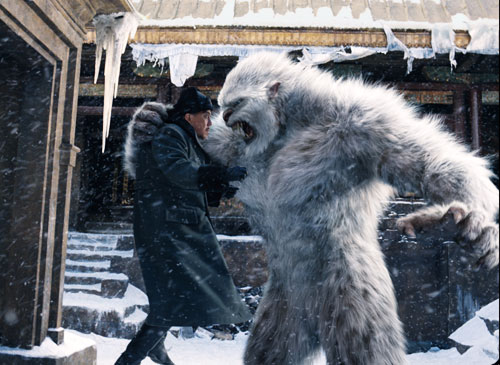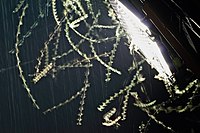Name: Giant Spider
Size: To some people, any size is scary. For the purpose of this post though, we're talking anything from one to hundreds of feet across.
Appearance: A spider. A bulbous abdomen, small thorax, small head. Two fangs, eight eyes, and eight legs. They can be almost any color of the rainbow.
Threat: Variable. Small spiders can have deadly venom, while larger spiders may be harmless, or able to impale people on their fangs. The largest spiders may even be able to swallow people whole.
Spiders are just plain unnerving to, let's just say, the vast majority of people. Crawling along on eight legs, venomous, leaving webs everywhere, why wouldn't they be? They are probably the closest we can get to an alien species. Spiders are just so different from practically every other type of creature on the planet. It's a good thing most of them are so small.
 Every so often though, a story comes out of a sighting of a spider of massive proportions. There is a legend in the Congo of the Jba Fofi, a spider with a leg span of at least five feet. It creates a home almost like a trap-door spider, although it's the size of a mud hut and is said to prey on antelopes.
Every so often though, a story comes out of a sighting of a spider of massive proportions. There is a legend in the Congo of the Jba Fofi, a spider with a leg span of at least five feet. It creates a home almost like a trap-door spider, although it's the size of a mud hut and is said to prey on antelopes.Recently, legends of giant spiders, or whole hives of them, have been further strengthened as weather in various places has forced spiders to collect together. These communes can span an entire tree, or even a full acre of nightmare fuel that not even fire can cleanse.
Being such fear-inducing creatures, it only makes sense that spiders would get picked up in fiction as antagonists. One of the earliest movies being Tarantula, released in 1955. Godzilla had a giant spider as an enemy in a few movies. All leading up to the present day with movies with such imaginative titles as Big Ass Spider, and Eight-Legged Freaks. It seems like they're everywhere.
All the more reason to squash anything that comes within reach. Or not. They do eat mosquitos, flies, and the occasional scorpion.
~ Shaun








































.JPG)